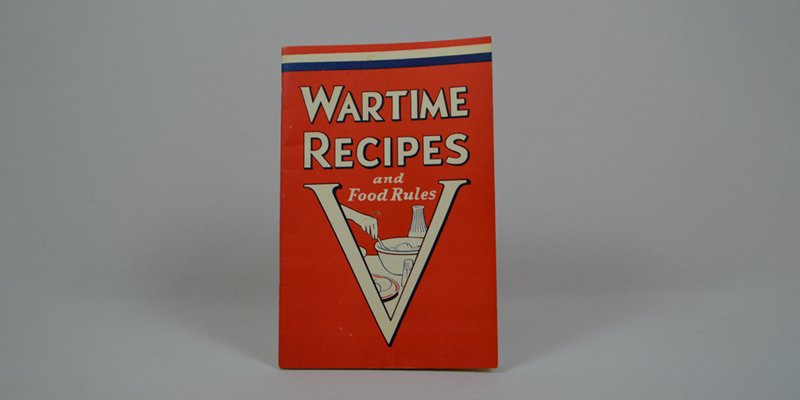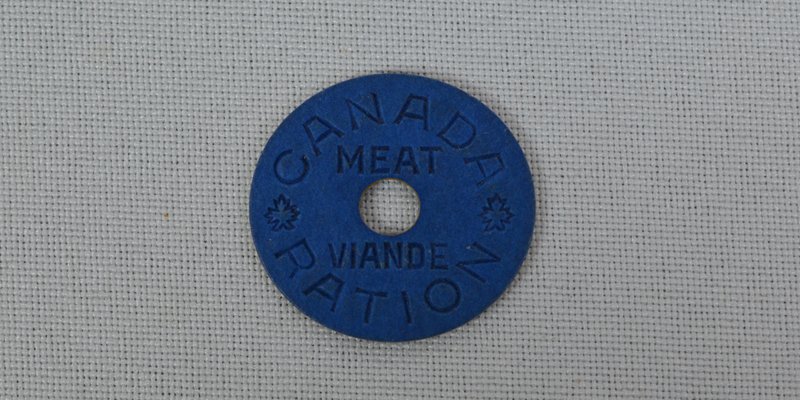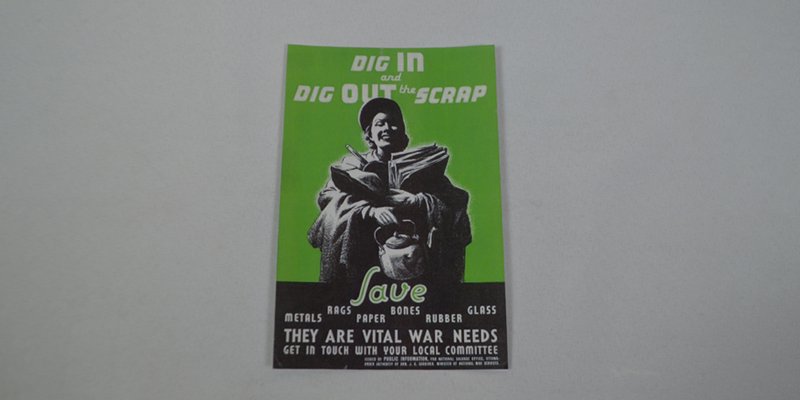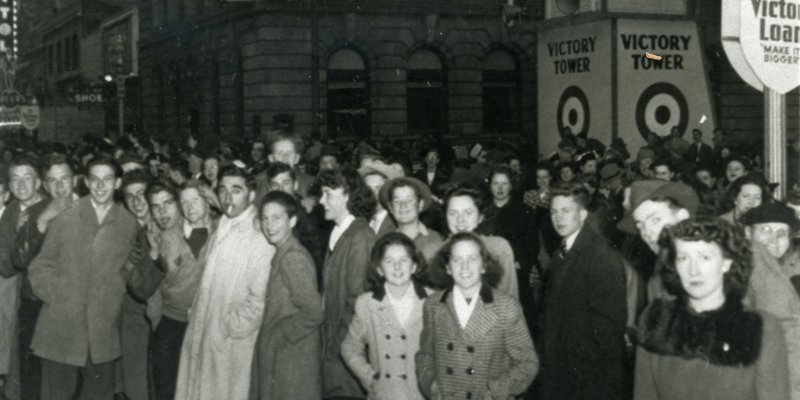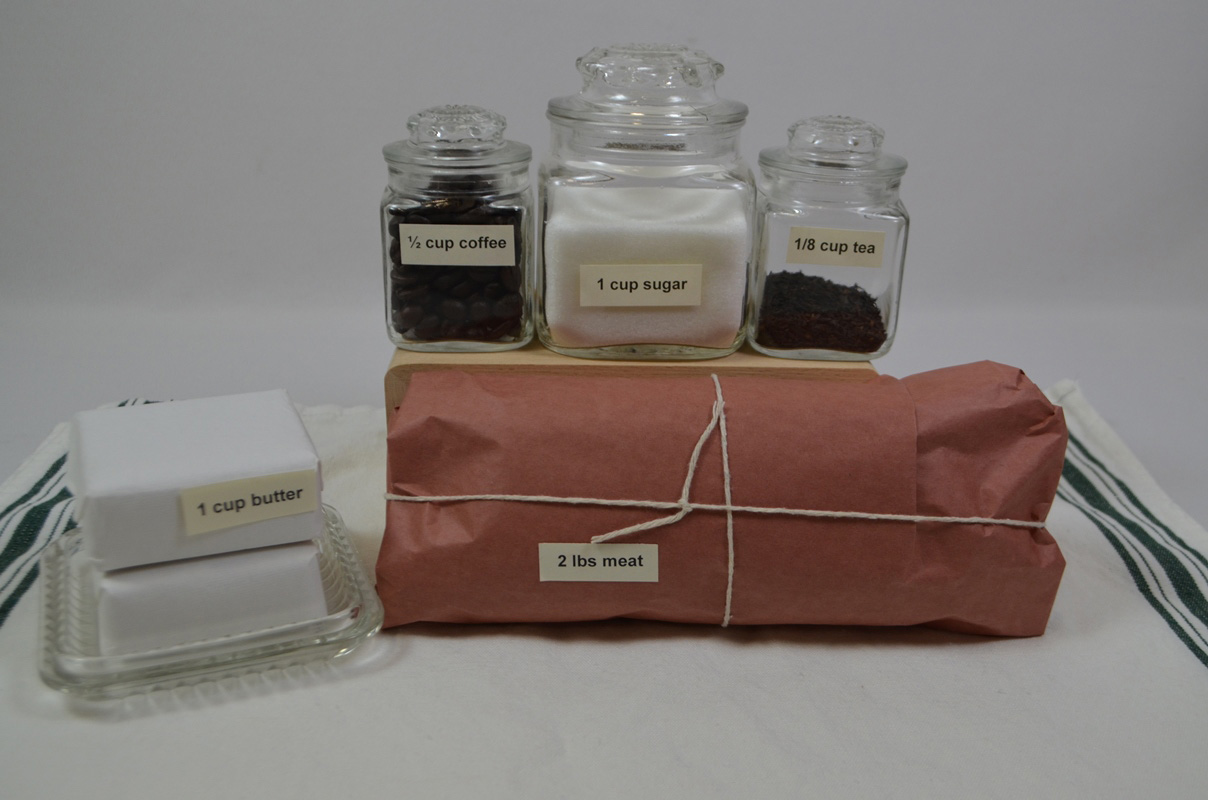History is a collection of stories. These stories connect us to the past and help us form our identities that are rooted in places. Let’s explore what Edmonton was like decade by decade.
These artifacts from the City of Edmonton Heritage Collection are from the 1940s.
Jump To: Edmontonians "Doing Their Bit" | The Need Was Real | Food Rationing 1942–1947 | Doing More With Less | Valuable War Materials From the Kitchen | Edmonton Restaurants
Edmontonians "Doing Their Bit" in the Kitchen
The 1940s in Edmonton, like the rest of the world, was a time of disruption due to the Second World War.
This pop-up exhibit focuses on the Edmonton home front specifically in relation to food rationing and salvaging efforts. By using the theme of food, we can explore what it was like to live in Edmonton from 1940 to 1947.
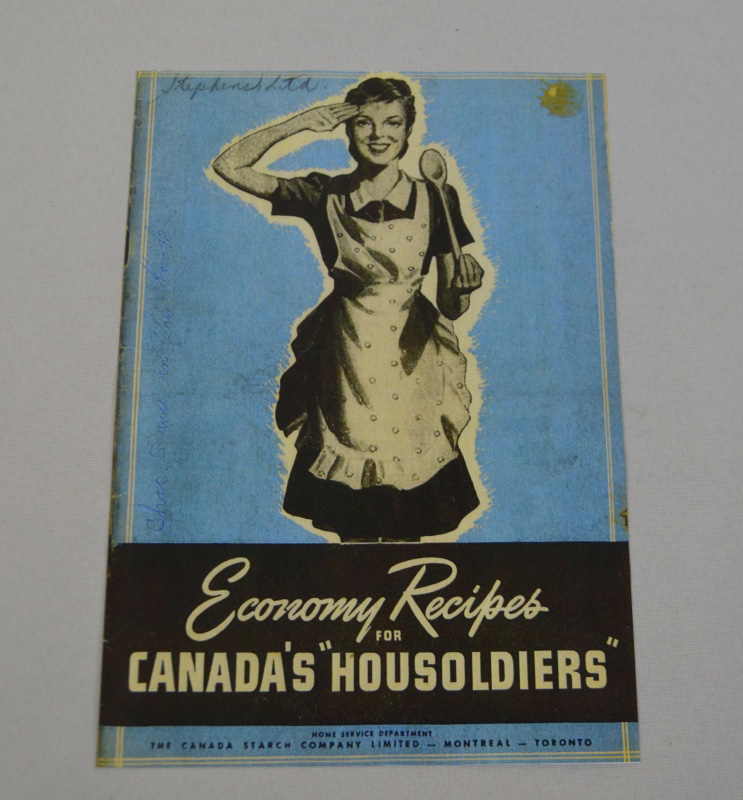 Reproduction of 1943 Canadian cookbook [McGill University Library]
Reproduction of 1943 Canadian cookbook [McGill University Library]
Wartime propaganda stated that the first line of defence was the kitchen, and the Canadian housewife became a “housoldier.” Edmontonians answered the call with gusto and followed the rationing program, collected salvageable war materials, and learned how to get by with less.
Find Out More:
Mosby, Ian. Food Will Win the War: the Politics, Culture, and Science of Food on Canada’s Home Front. Vancouver: UBC Press, 2014.
Tingley, Ken, ed. For King and Country: Alberta in the Second World War. Edmonton: Reidmore Books, 1995.
 Examples of food products shipped to Britain [City of Edmonton Heritage Collection]
Examples of food products shipped to Britain [City of Edmonton Heritage Collection]
Because Great Britain was quickly cut off from continental Europe, Canadian aid was essential for feeding its citizens. By the end of the war, Canadian food exports were roughly: 1.5 billion kilograms of bacon and more than 325 million kilograms of cheddar cheese, butter, and meats.
This excerpt from a story by Wendy Becker, who grew up in England during the Second World War, shows how important food parcels were for people in England:
The food parcels varied a bit from one to another. They would often contain a tin of ham - the sort with jelly around it. I still love that jelly today. We might find a tin of sausages. There was nothing "fresh" of course, because of the time it took to get from Canada to England by boat. I can remember there being tinned fruit and tinned cream, also dried milk. I think there was tinned salmon, and, quite extraordinarily, there was tinned butter. There was usually a selection of tinned vegetables as well.
It really didn’t matter what was in the parcel. We were so grateful for every single item. I think it was as much to do with being remembered and cared for by the Canadians that made it so special.
Food Rationing 1942–1947
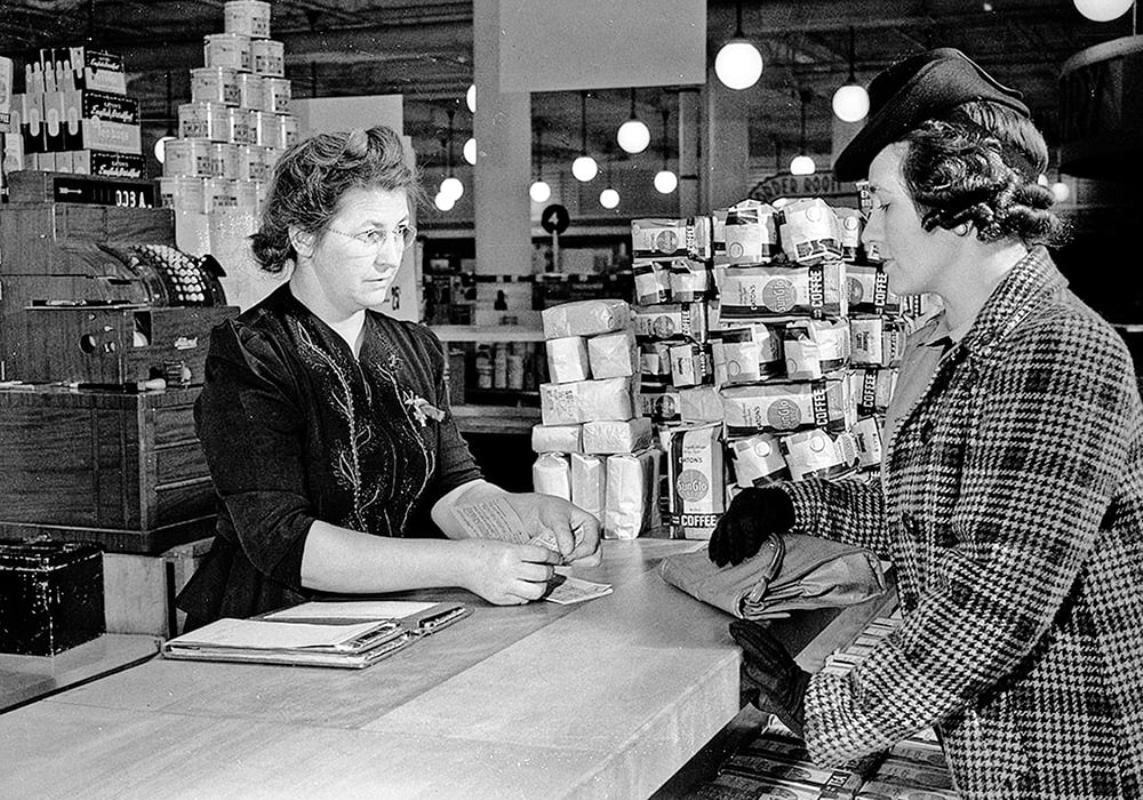 Buying food at an Eaton’s department store using ration coupons, 30 March 1943 [City of Toronto Archives, Fonds 1266, Item 84160]
Buying food at an Eaton’s department store using ration coupons, 30 March 1943 [City of Toronto Archives, Fonds 1266, Item 84160]
Rationing in Canada was introduced by the federal government in 1942. It was regulated by the Wartime Trade and Prices Board, who controlled prices, rent, and wages in order to ensure stability of the Canadian economy and prevent the cost of living from rising. Food rationing was mainly initiated to free up food items to not only support the Canadian soldiers overseas but also the citizens of Great Britain.
Rationing was also needed to limit the consumption of imported food (such as tea, coffee, and cheese). These products were difficult to obtain because some merchant ships were taken over for use by the navy and others were sunk by German submarines.
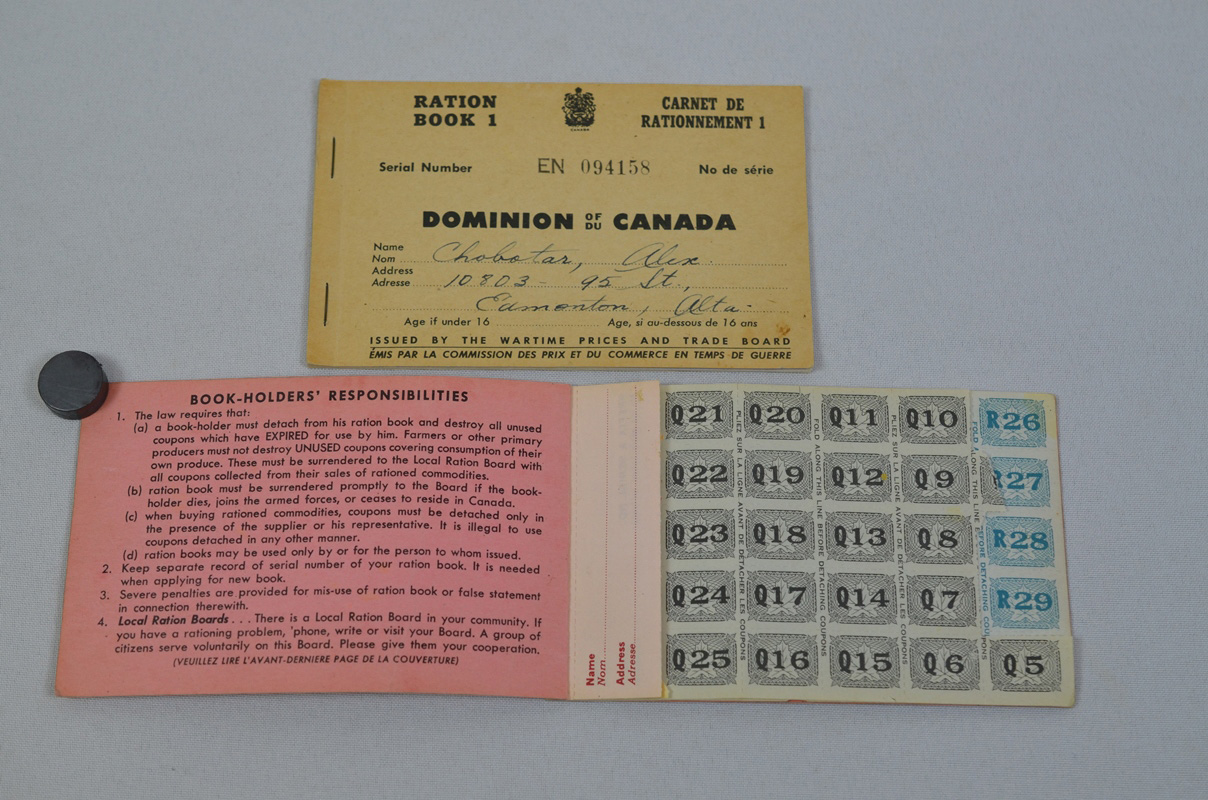 Ration Books from City of Edmonton Heritage Collection
Ration Books from City of Edmonton Heritage Collection
Ration Books:
- 11 million ration books were issued by the Wartime Trade and Prices Board to almost all Canadian adults and children, except for military personnel
- Each member of a household applied for a book
- Every week, the grocers and newsagents, following the direction of the government, would post which coupons could be used
- At the store, coupons were exchanged for the specified amount. The Wartime Trade and Prices Board also regulated the price the items could be sold for.
Weekly rations for people over 12 years of age (exact quantities varied throughout the war):
- Sugar - one cup (the average Canadian eats twice as much today)
- Tea: 2 tablespoons or ⅛ cup
- Coffee: 8 tablespoons or ½ cup
- Butter: one cup
Meat: one to two pounds
Gasoline and alcohol were also rationed.
 Weekly notice for the Wartime Prices & Trade Board, Edmonton Journal, February 1943
Weekly notice for the Wartime Prices & Trade Board, Edmonton Journal, February 1943
Then and Now
By today’s standards and recipes, the ration amounts may not seem too dire. However, it is important to note that the 1940s had different standards and uses of these ingredients. Processed foods were not as readily available, so most things like cookies, salad dressings, breads, and jams would be made from scratch, which would require raw ingredients such as sugar. The majority of families rarely ate out at restaurants. Fast food, Skip the Dishes, and other convenience food options did not exist. People prepared and ate the majority of their meals at home.
More Food for Thought: Alberta Sugar Production and Japanese Internment
Sugar was rationed because Canada did not produce enough sugar to meet its needs.
Alberta beet farms grew in response to the need for sugar and turned to Japanese internees to supply the labour.
Learn More:
Nikkei Tapestry: The Story of Japanese Canadians in Southern Alberta
Doing More With Less
Rationing in Canada was often more of a nuisance than a hardship as the majority of Canadians did not go without food. But rationing did impact Edmontonians as it meant they had to deal with shortages and government regulations.
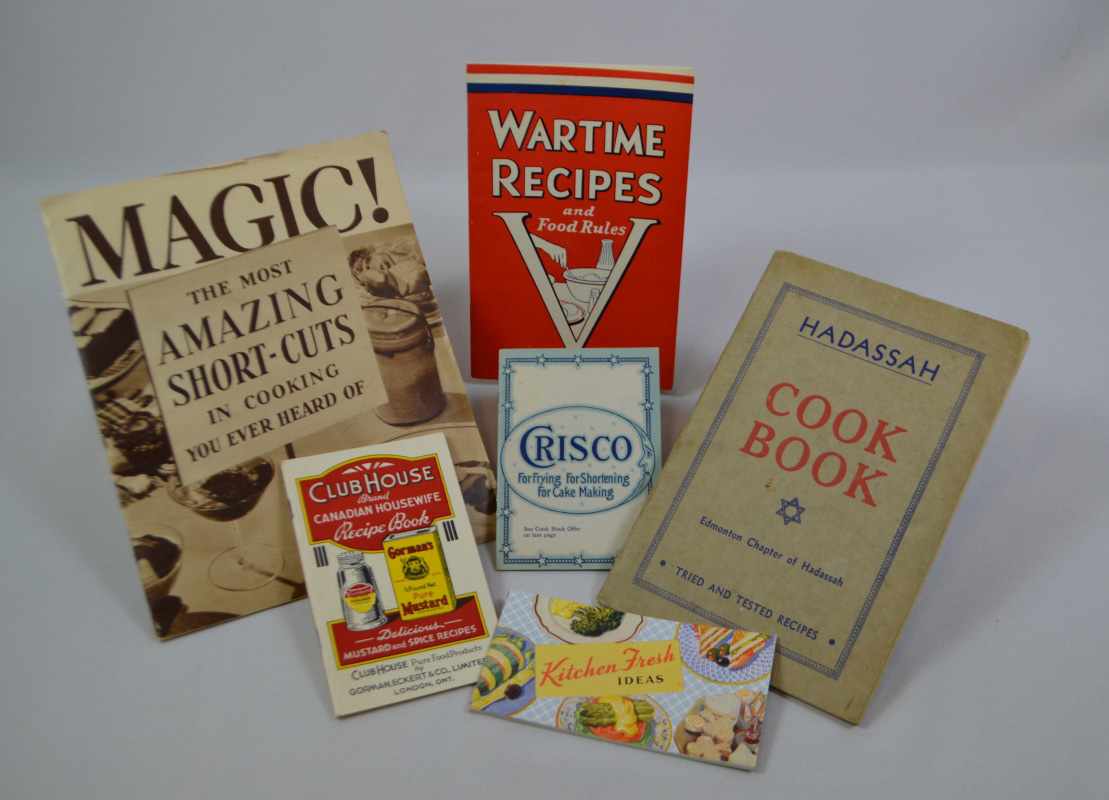 An assortment of cookbooks published in the 1940s [City of Edmonton Heritage Collection]
An assortment of cookbooks published in the 1940s [City of Edmonton Heritage Collection]
Government departments, food companies, and community groups published advice columns, recipe books, and pamphlets on how to stretch rations, substitute ingredients, eliminate food waste, and can fruits and vegetables.
WW2 cookbooks to explore:
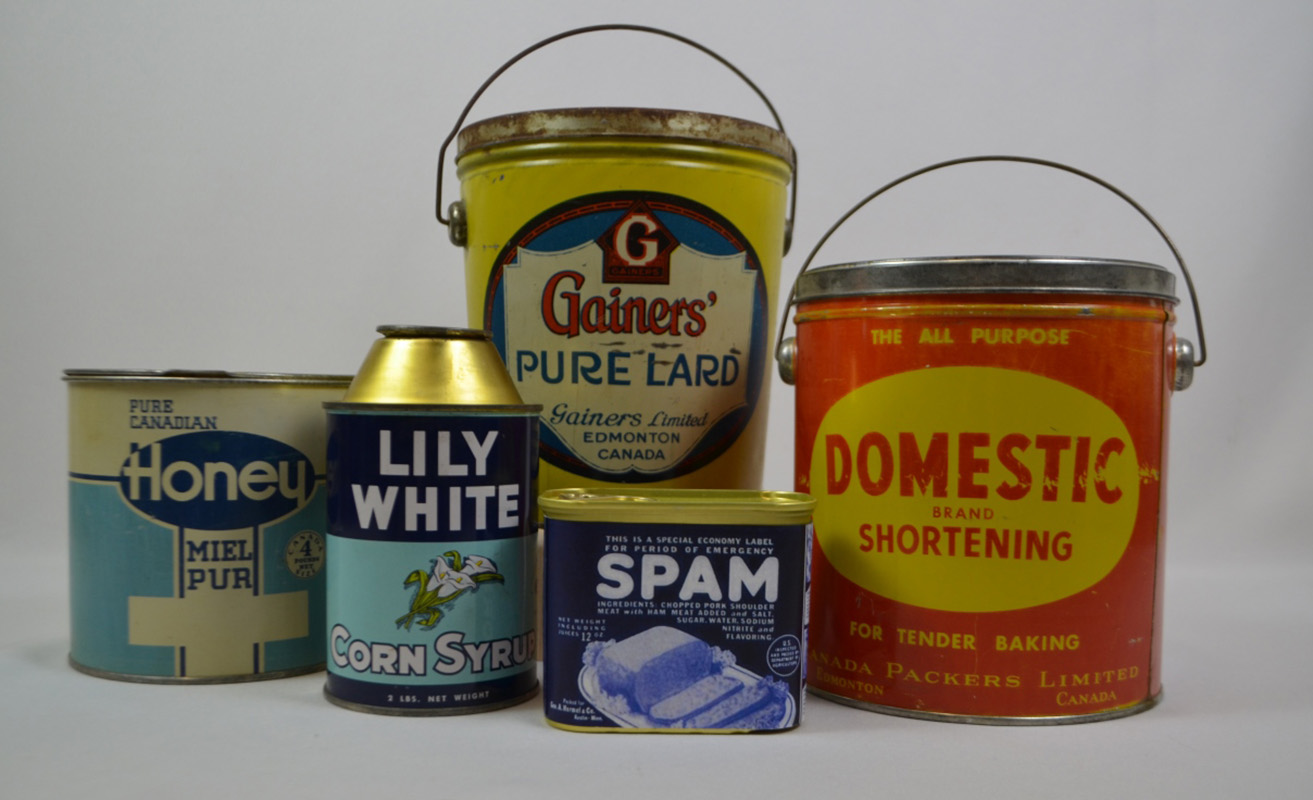 Food containers from the 1940s [City of Edmonton Heritage Collection]
Food containers from the 1940s [City of Edmonton Heritage Collection]
To manage the scarcity due to rationing, substitutes were suggested:
- Meat: use organ meat - tripe, kidneys, tongues and liver, or the popular newly introduced Spam.
- Butter: expand butter by mixing it with water or evaporated milk. Use shortening or lard (margarine was not available until the late 1940s because dairy farmers had successfully lobbied to keep it banned).
- Sugar: use corn syrup or molasses, honey, or use dried fruit to sweeten foods.
 Gardening artifacts [City of Edmonton Heritage Collection]
Gardening artifacts [City of Edmonton Heritage Collection]
The government also encouraged people to plant Victory gardens. Vacant lots throughout Edmonton neighbourhoods were turned into vegetable patches with the idea that the produce grown would not only feed Edmontonians but also be shipped overseas.
More Food for Thought: Canada's Food Guide
The first Canadian food guide, Canada's Official Food Rules, was published in 1942. It was introduced to help Canadians navigate the restrictions of wartime rationing. Work on the guide began prior to the war, in 1938. Scientists, medical doctors, academics and social workers devised the plan in response to the poor nutrition and conditions faced by so many during the Great Depression.
As a guide, it was very problematic. It was written from an entirely Anglo-Canadian perspective and did not include or acknowledge the dietary traditions of different cultures, including First Nations, Inuit, and Chinese Canadians.
The most distressing component of the guide was that it was first tested on Indigenous children in residential schools due to their malnourished state.
Learn More:
Valuable War Materials From the Kitchen
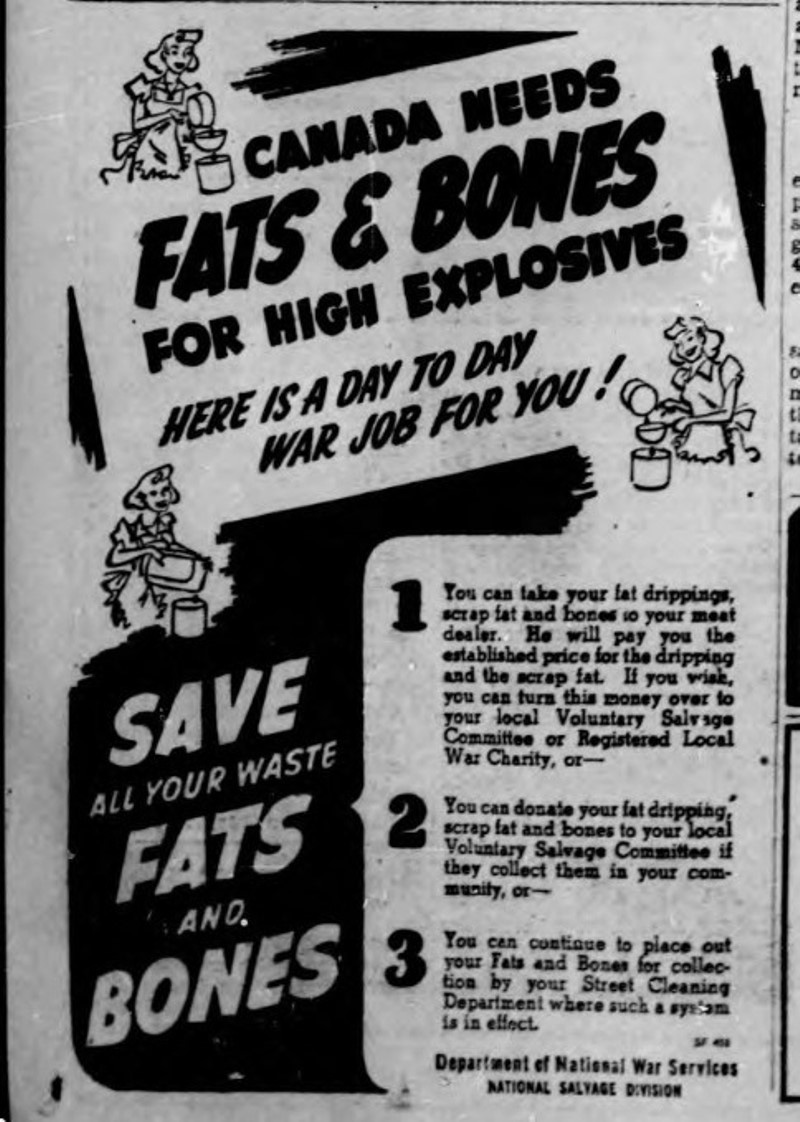 Advertisement from the Edmonton Journal, April 1943
Advertisement from the Edmonton Journal, April 1943
The Canadian manufacturing industry needed raw materials to supply military operations overseas. Canadians were asked to save cooking fats and bones that would be used to make glycerin and glue for weapons and high explosives.
Objects that contained nylon, rubber and metal were also asked to be salvaged and recycled for war manufacturing. Consumer products containing these materials were modified (tin cans became smaller) or were limited in production (new kitchen appliances). Shortages resulted quickly.
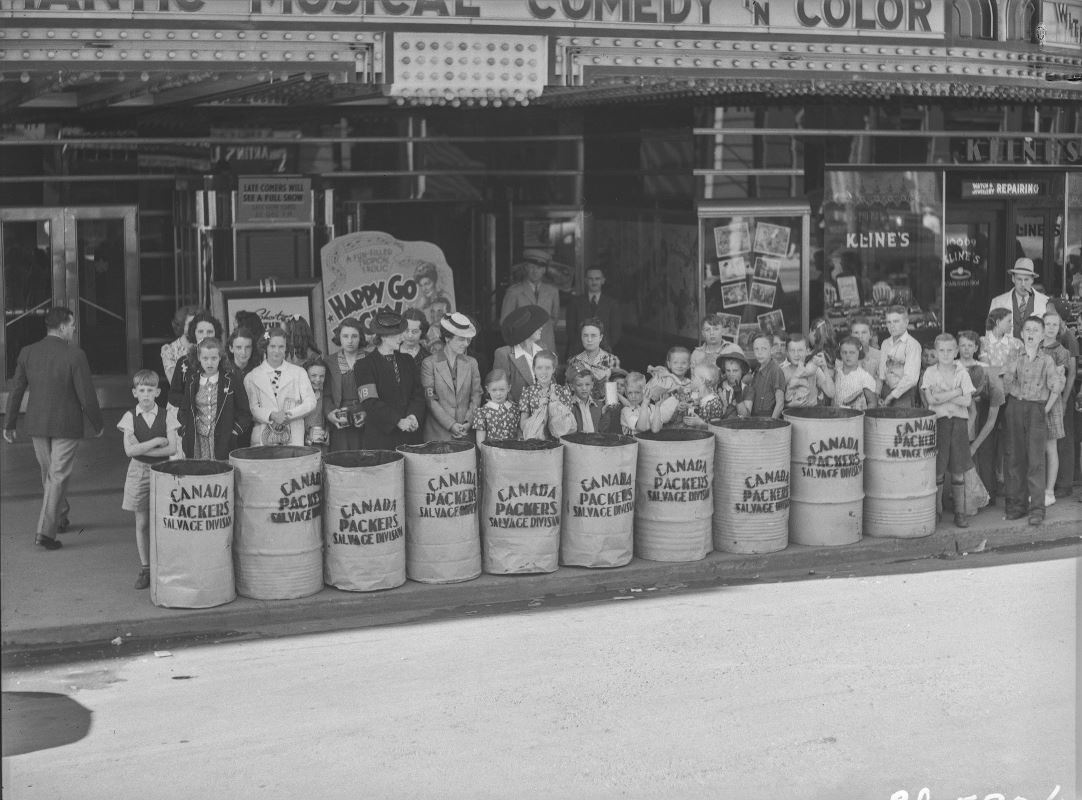 Salvage drives were organized and supported by businesses, such as the Capitol Theater. One pail of fat could be exchanged for a free movie on Saturday! [Provincial Archives of Alberta BL590.1]
Salvage drives were organized and supported by businesses, such as the Capitol Theater. One pail of fat could be exchanged for a free movie on Saturday! [Provincial Archives of Alberta BL590.1]
Margaret Matheson, who grew up in Edmonton during the war recollects:
There were continuous salvage drives in Edmonton, like the recycling that goes on now, only the money raised went to the war effort. After school my cousin and I would take a toboggan around the neighborhood to collect newspapers, coat hangers, metal and fat. One summer the two of us worked on a salvage truck, which went all over the city collecting salvage.
[Northcott, H., ed. The Women’s Canadian Club of Edmonton Remembers: World War II Vignettes. Purple Wolf Publishing, 1996].
Edmonton Restaurants
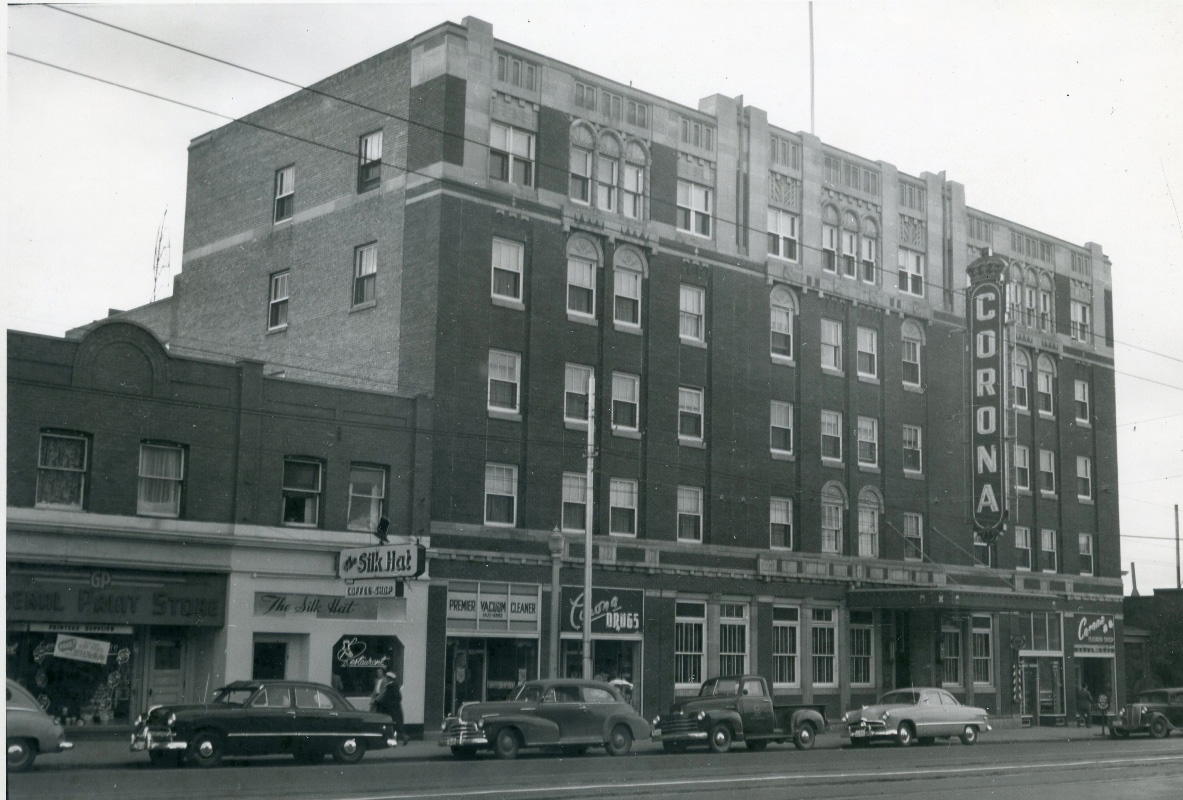 The popular Silk Hat on Jasper Avenue, one of Edmonton’s first cafes, opened in 1913 and closed in 2007 [City of Edmonton Archives, EA- 356-23]
The popular Silk Hat on Jasper Avenue, one of Edmonton’s first cafes, opened in 1913 and closed in 2007 [City of Edmonton Archives, EA- 356-23]
At the start of the war, the Wartime Trade & Prices Board created meatless Tuesdays for all restaurants to follow and quickly added a meatless Friday.
One of the greatest impacts for Edmonton restaurants was the “American Invasion” on Edmonton that occurred during the war. Thousands of U.S. servicemen and personnel were sent to Edmonton either as pilots to ferry planes to Alaska or to work on the construction of the Alaska highway. Their presence put demands not only on rationed goods but also on Edmonton housing.
Find Out More:
The Commodore Restaurant (1942) is still open!
and also The Sugar Bowl (1943)!


